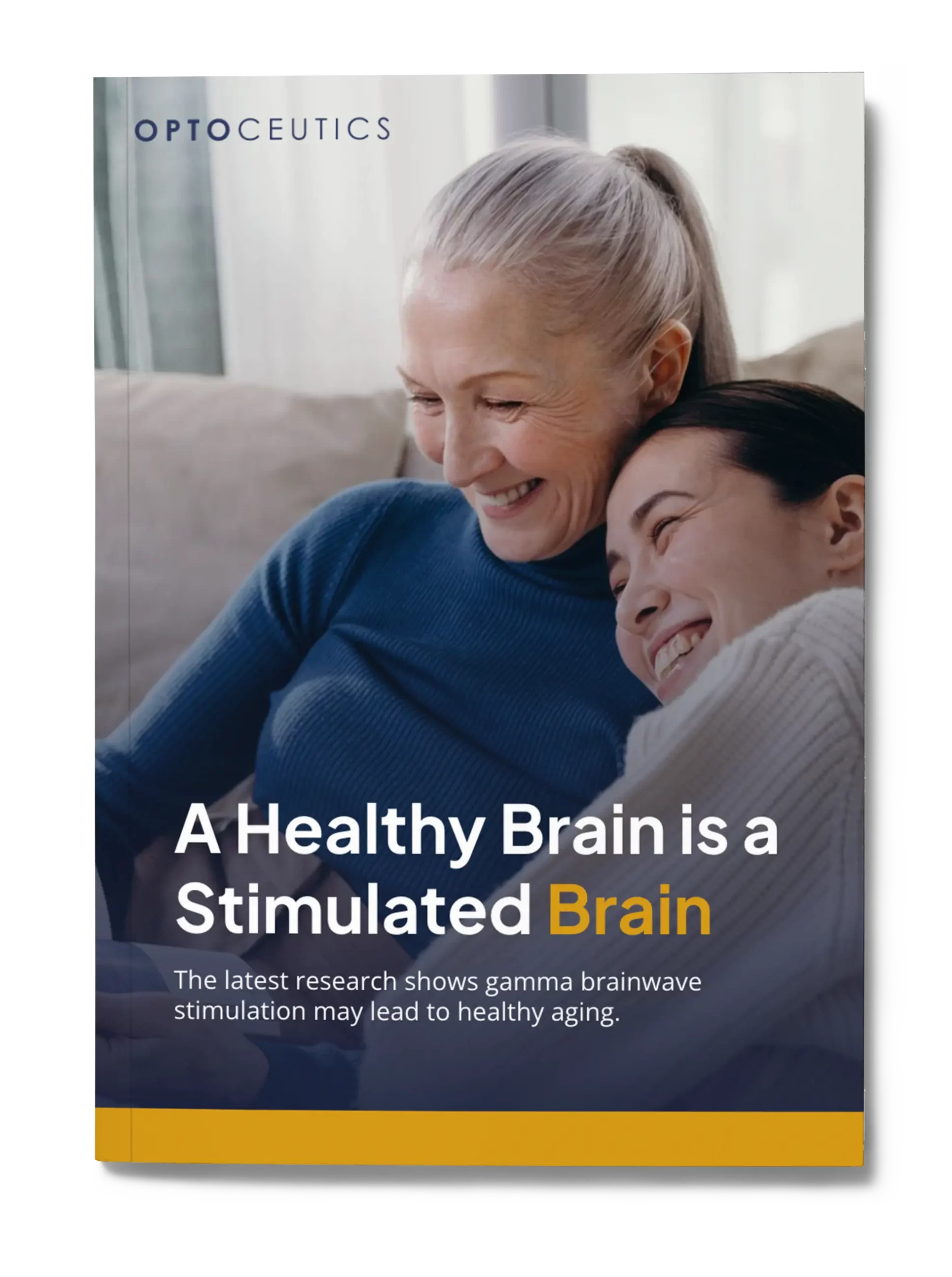We at OptoCeutics are excited to be pioneering a new brain stimulation technology. However, with this comes the need to educate consumers, which is exactly what we hope to accomplish with this blog. Most recently, many folks have asked us to describe the differences between 40Hz Light Therapy and SAD (Seasonal Affective Disorder) Light Therapy, so let’s get to it.
SAD Light Therapy:
What it Does: SAD Light Therapy, or light therapy for Seasonal Affective Disorder, is designed to alleviate symptoms of seasonal depression, often caused by reduced exposure to natural light during the winter months.
Who it’s For: This therapy is primarily recommended for individuals experiencing symptoms of seasonal depression, such as low energy, mood swings, and sleep disturbances.
How it Works: SAD Light Therapy involves exposure to bright light, typically mimicking natural sunlight, to help regulate the body’s internal clock and improve mood.
Light therapy is an effective treatment of seasonal affective disorder (SAD), when administered daily for at least several weeks. Studies have previously reported a small improvement in mood in SAD patients following exposure to the first hour of treatment.[3]
40 Hz Light Therapy:
How is it Different?: 40 Hz light stimulation is very different from SAD Light Therapy; With 40 Hz light, it’s not about the strength of the light, but the effect on the brain of the flickering which differentiates it.
What it Does: 40 Hz light stimulation is a non-invasive therapy that uses engineered light, flickering at 40 Hz, which is has been shown to stimulate brain activity. It has gained attention for its potential to enhance cognitive function, improve mood, and support overall brain health, by inducing more gamma brain wave activity in the brain.
Who it’s For: This novel therapy may be beneficial to those interested in living well with age-related cognitive decline and It’s also being studied and tested for its potential in managing neurocognitive conditions like Alzheimer’s disease. It’s important to note; these tests have not been finalized and therefore we cannot claim with scientific certainty that the technology has proven itself effective.
How it Works: Exposure to 40 Hz light stimulation is proven to stimulate gamma brain waves in most but not all subjects.
At Optoceutics, we are pursuing a clinical study on 40 Hz light, as a potential way to slow the progression of cognitive decline in Alzheimer’s patients. We have also engineered a patented type of 40 Hz light, known as ISF (Invisible Spectral Flickering) – Referring to how the 40 Hz light is seen by the eye. Normally, the 40 Hz light comes in the form of strobe light, which is clearly visible and often irritating to the eyes. ISF on the other hand appears to be more tolerable.
Others in this field have completed scientific studies that has shown that after six months of daily exposure to 40Hz stimulation, participants experienced: [1]
* 84% slowing of functional decline
* 83% slowing in memory and cognitive decline
* 61% reduction in whole brain atrophy and volumetric loss
Also, recent studies have demonstrated that only one hour of daily exposure to this stimulation has the potential to slow the progression of cognitive decline [2].
Choosing the Right Therapy for You:
Consider Your Needs: If you’re looking to support cognitive function, 40 Hz Light Therapy may be a consideration. However, if you’re dealing with seasonal depression, SAD Light Therapy is the more appropriate choice.
Consult a Professional: It’s essential to consult a healthcare provider or specialist before starting any light therapy. They can help determine which therapy aligns with your specific needs and provide guidance on usage.
Be Patient: Results may take time. Both therapies require consistent use over a period before you might notice improvements.

REFERENCES:
Jonathan Megerian, Mihaly Hajos, Evan Hempel, Aylin Cimenser, Alyssa Boasso, Colleen Cotter, Martin Williams, Kim Kwan, Jessie Nicodemus-Johnson, Suzanne Hendrix, Brent Vaughan, Zach Malchano
Neurology May 2022, 98 (18 Supplement) 1936;
[3] Pubmed
Curious to learn more?
Take a look at some of our other blog posts to dive into the science of living a healthy and happy life.








